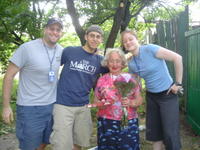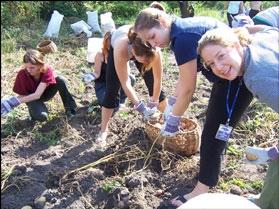From the Michigan Daily
By Whitney Dibo
The speaker’s voice resonates with a natural blend of familiarity and animosity typical of this casual observation. Her friends peer down State Street at the girl’s sorority sweat pants, UGG boots and straight brown hair. They all nod in agreement. “There are so many JAPs on this campus,” one chimes in. She emphasizes the consonants, making the word sound slightly harsher.
I tend to shrug off the JAP reference, but this day the label reverberates off the pavement and sticks to me with an uncomfortable sting. But I don’t have time to dwell on it. I am rushing back to my apartment, trying to catch a plane home for Yom Kippur. It is the Jewish Day of Atonement, the holiest day on the Jewish calendar.
Trying to beat the sundown — the traditional end to any Jewish holiday, I squeeze into my middle seat on Northwest Airlines. I see a few other girls I know to be Jewish board the plane and maneuver their bags into the crowded overhead bins and start to wonder — are we the JAPs? I am a Jewish girl from the north suburbs of Chicago — does the term apply to me? And what does it mean that this stereotype has persisted so strongly on campus, even in this era of hyper political correctness?
As we take off, I have an unsettling feeling that this label is chipping away at the perception of Judaism on campus more than we readily admit. We need to separate this social stereotype from the religion itself — if Xerox can mean copy, then it’s not hard to see how JAP can mean Jewish. I hear the phrase more and more lately; it is picking up steam — and I can feel it bulldozing over the true meaning of Judaism.
For people fortunate enough to be unfamiliar with the term, JAP it is an acronym for Jewish American Princess — a term associated with affluence, homogeneity and exclusivity. The word predates black yoga pants and straightening irons. It has its roots in early immigration, as Jews found new purchasing power in their adopted country. Who better to show their parents how to spend money in this strange new land than their rapidly assimilating daughters? This trend gave rise to a distinctly negative nickname — one synonymous with materialism, entitlement and superficiality.
The stereotype originated during an era when no matter how smart or ambitious women were, they were sill considered dependent. JAP does not describe the headstrong Jewish women I know exist on campus. The term centers on deprecating sexism — but despite its detrimental overtones, very few people in the Jewish community object to its use. It’s a conventional part of campus vernacular — Jewish girls call each other JAPS, bars and restaurants are tagged as “JAPpy” — we continue to institutionalize its use and diminish our own identities. The term is used so liberally it has lost the harshness of an ethnic slur.
The Jewish calendar now reads 5766. It is one of the oldest, most influential religions in the world. To me, Judaism is about the value of family, the importance of charity and the beauty of ancient tradition. Unfortunately, many people on campus are better versed on Judaism’s social labels than its actual history. Why read the Torah when you can get the cliff notes? The actual religion is being lost behind this cloud of physical and social stereotypes.
The loss here is two-fold. For students who have not had much interaction with Jews before coming to the University, they lose incentive to learn more. Why dig deeper when the religion is neatly boxed in a tangible stereotype? And on a larger scale, we are doing a disservice to our religion by passively allowing JAP to epitomize Judaism on campus. I remember back in high school when it gradually became offensive to use the phrase “That’s so gay.” The gay/straight alliance took the initiative to actively reject the phrase — and while it took time, the student body eventually caught on. Peeling away labels and offensive language ingrained in American culture is not easy, but we are all better for trying.
What if we as Jewish women decided that Judaism is too rich in tradition and culture to be ensconced in a superficial cultural label? What if we educated people on what it means to be Jewish instead of perpetuating a stereotype? This does not mean dressing differently or hanging out at a different bar. It means stopping our own perpetuation of the JAP jargon, and in turn the non-Jewish community will likely follow suit. We can set a standard that JAP is not an acceptable description of Jewish woman and just in being open about it we can start to debunk the stereotype.
JAP is really no different than all other ethnic labels. They all serve the same purpose: to mask the individual. And this, I assure you, is everyone’s loss.



